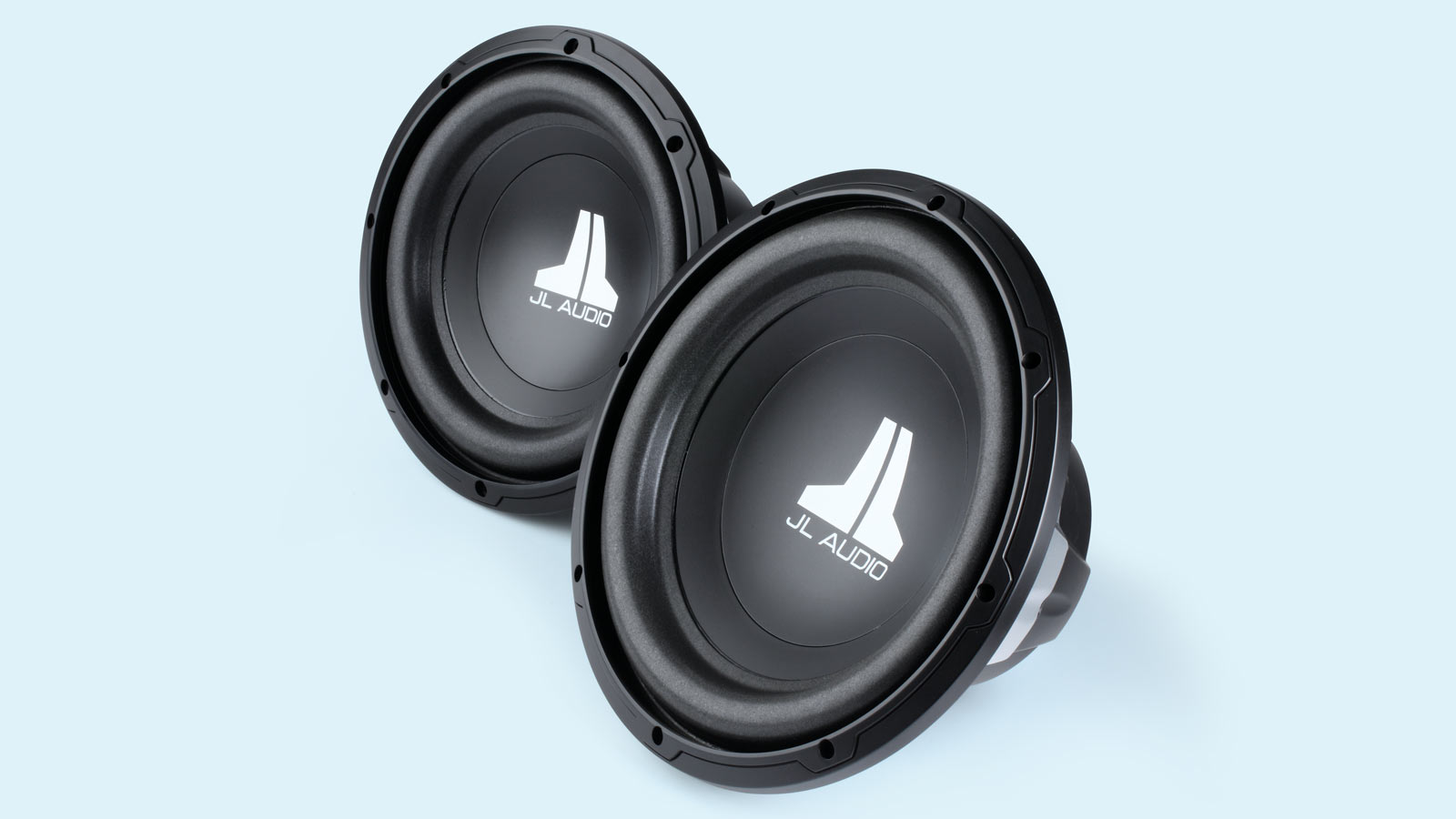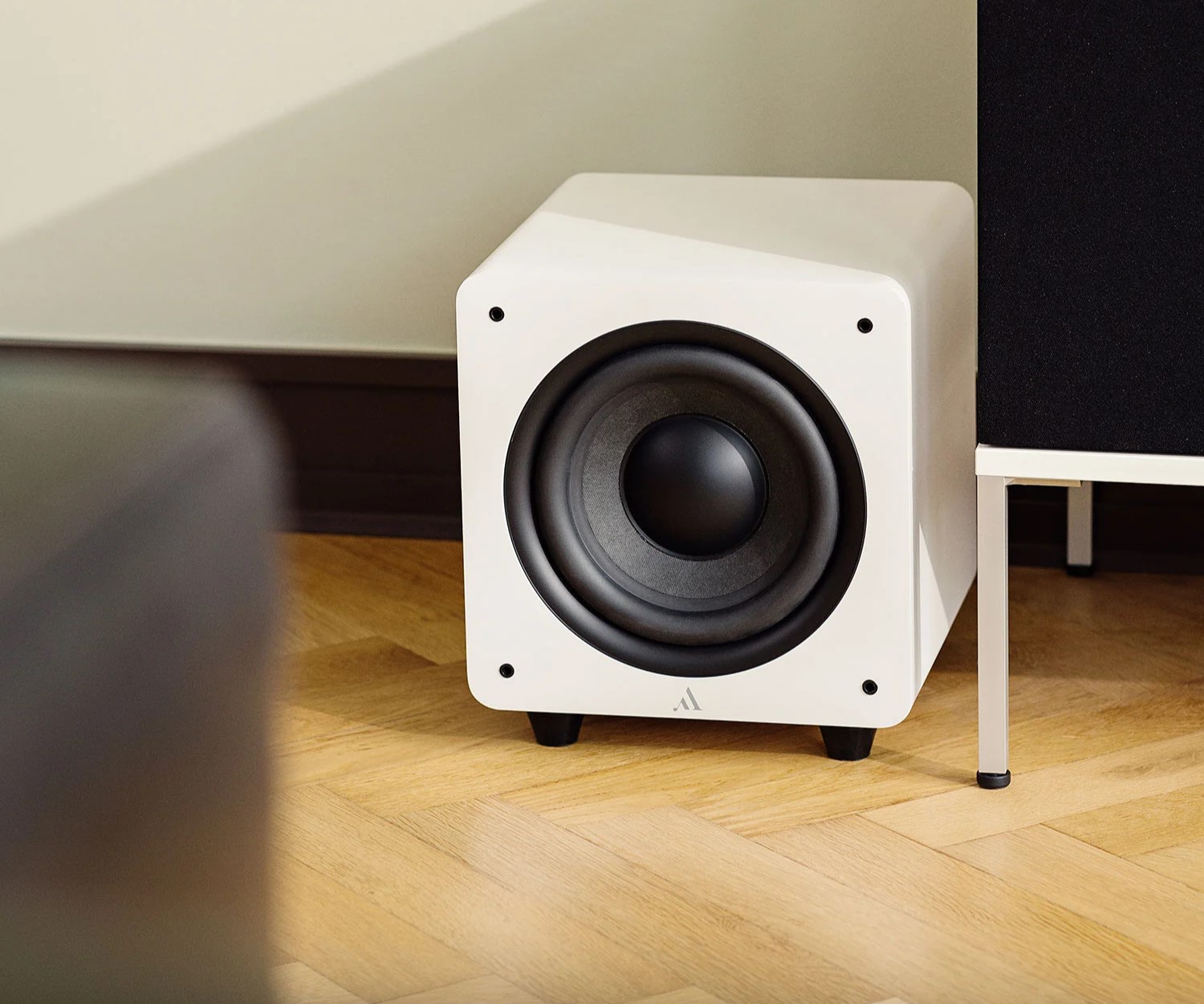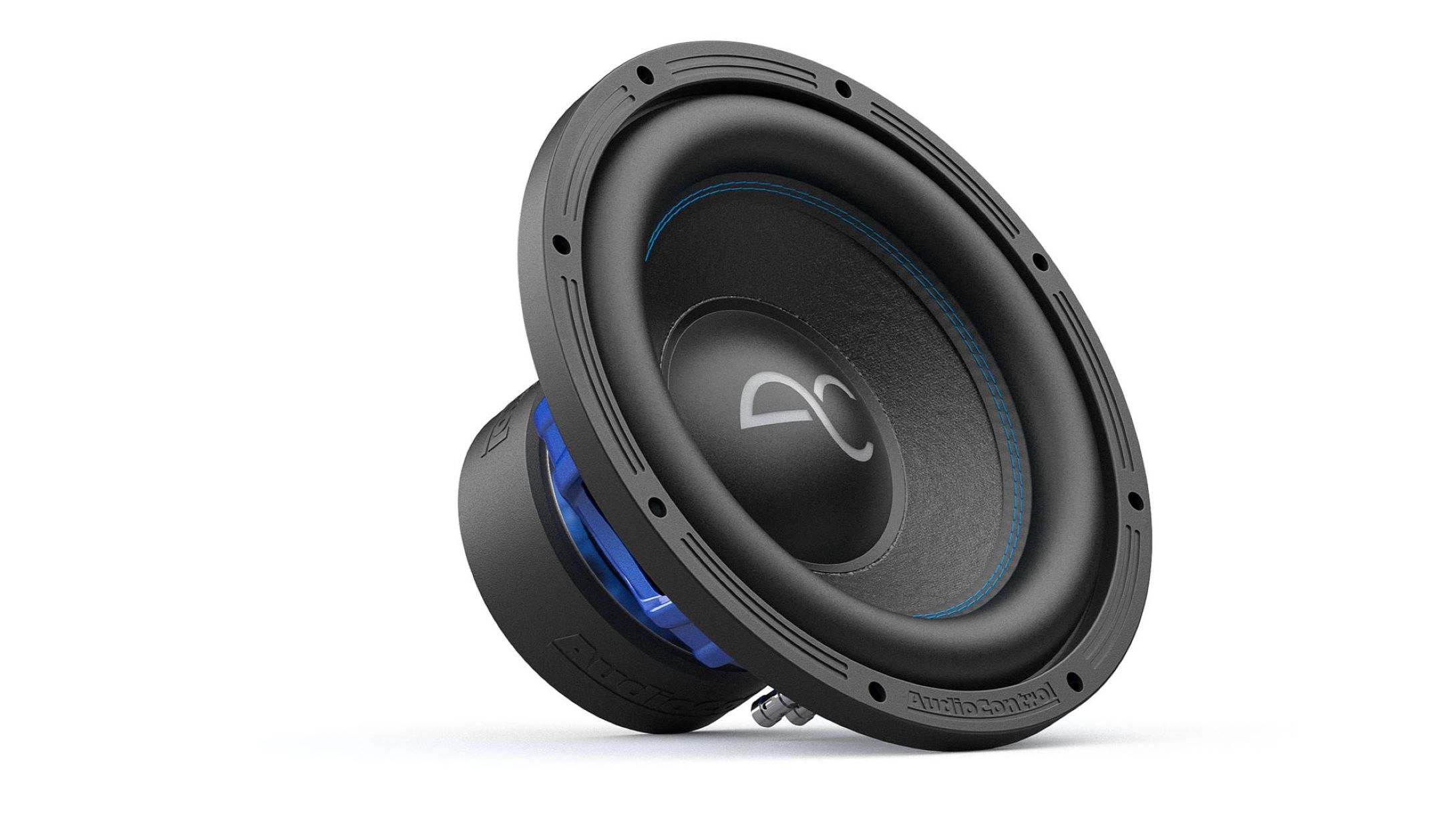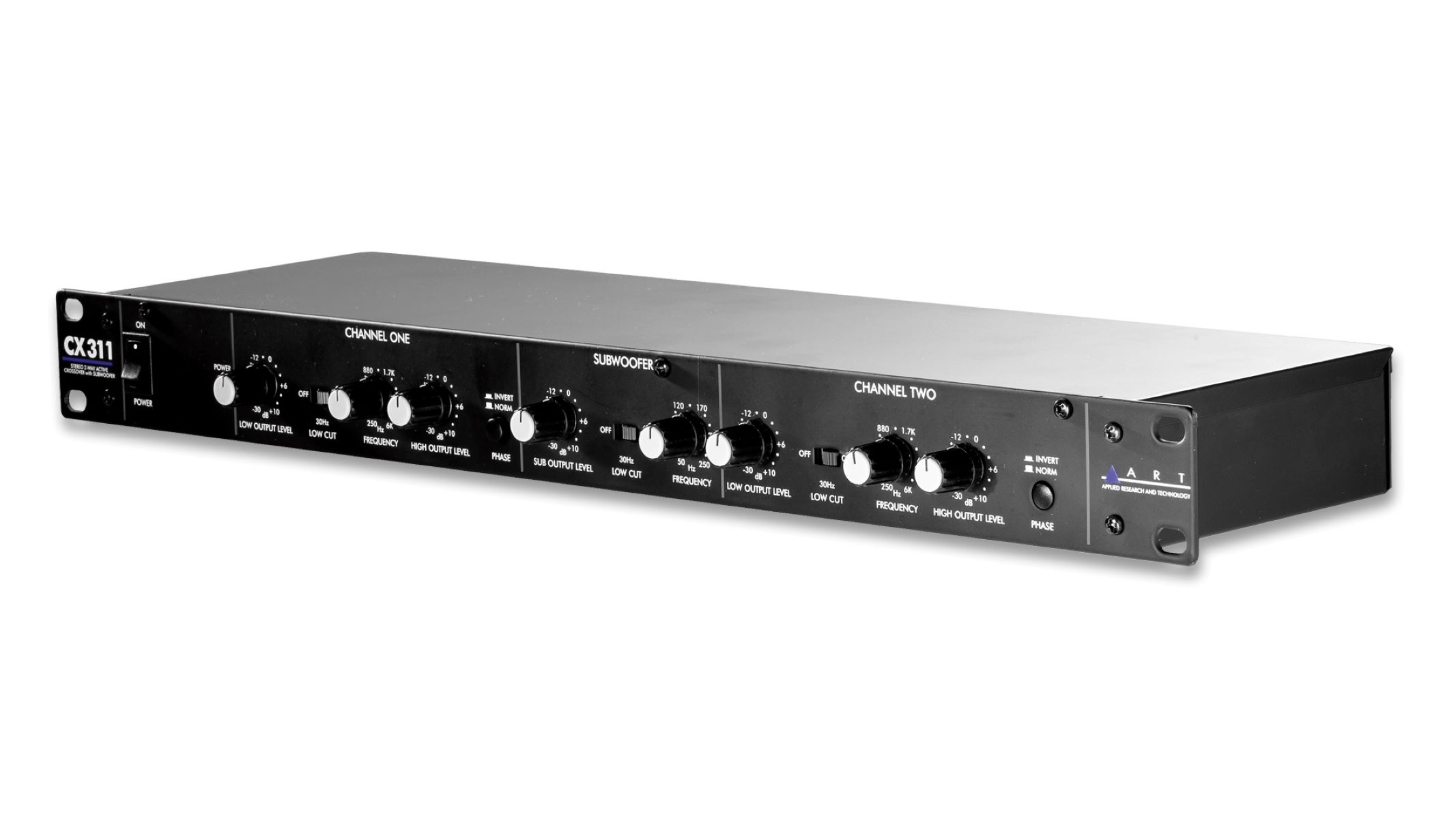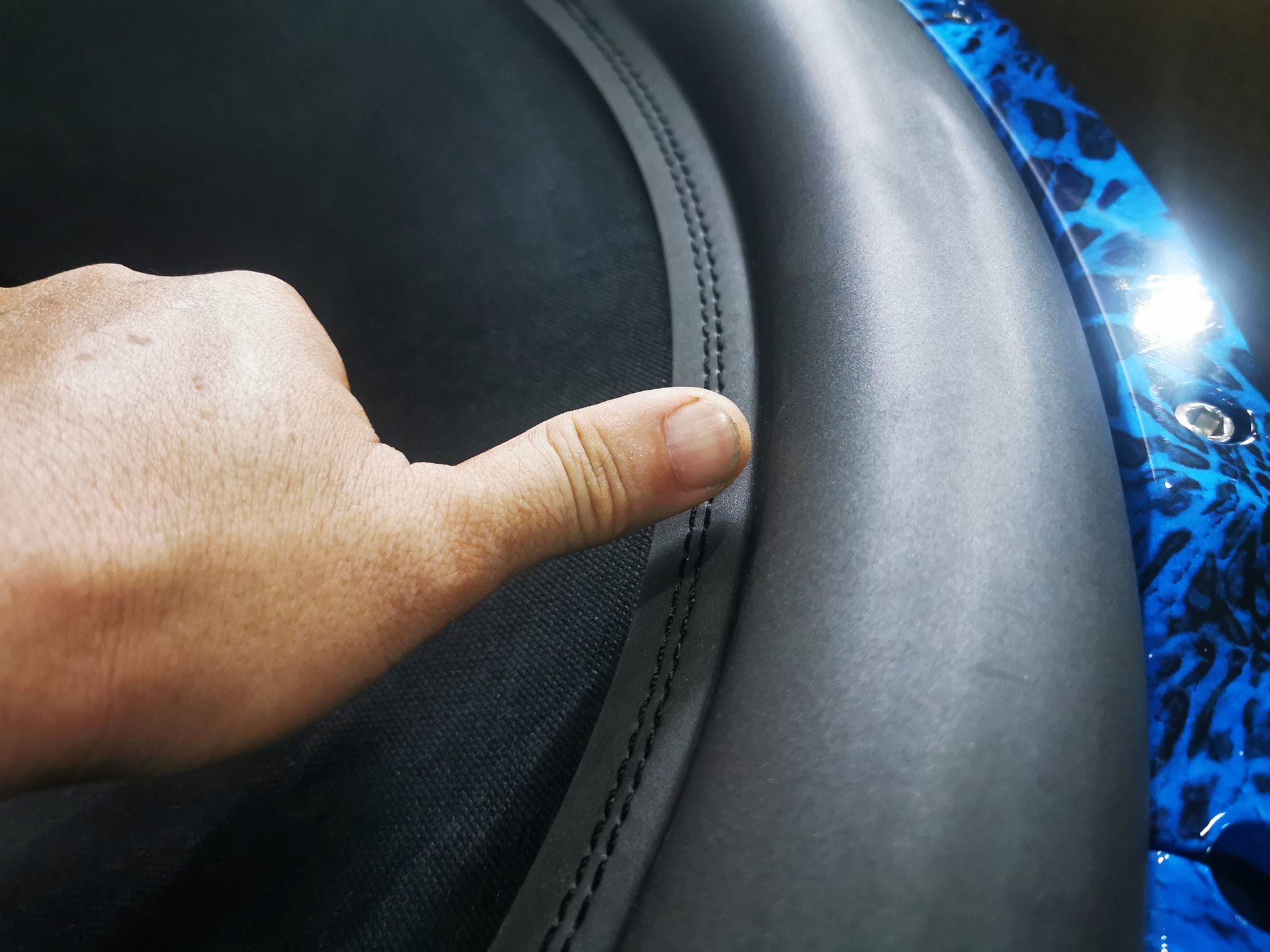Home>Devices & Equipment>Subwoofer>What Is The Best Shallow Subwoofer


Subwoofer
What Is The Best Shallow Subwoofer
Published: January 20, 2024
Looking for the best shallow subwoofer? Discover top-rated subwoofers that deliver powerful bass in tight spaces. Find your perfect subwoofer today!
(Many of the links in this article redirect to a specific reviewed product. Your purchase of these products through affiliate links helps to generate commission for AudioLover.com, at no extra cost. Learn more)
Table of Contents
Introduction
Welcome to the world of deep bass and immersive audio experiences. If you are an avid music lover or a movie enthusiast, you are likely familiar with the importance of a high-quality subwoofer. A subwoofer is designed to reproduce low-frequency sounds, adding depth and richness to your audio setup. However, traditional subwoofers can be bulky and take up a significant amount of space in your car or home theater system.
This is where the concept of a shallow subwoofer comes into play. A shallow subwoofer, also known as a slim or compact subwoofer, is specifically designed to provide powerful bass in a smaller form factor. These subwoofers are a great solution for those who have limited space but still want to experience the full impact of low-frequency sound.
In this article, we will explore the world of shallow subwoofers, discussing what they are, factors to consider when choosing one, top models in the market, installation considerations, and the benefits they offer. Whether you are looking to upgrade your car audio system or enhance your home theater setup, this article will provide you with the necessary knowledge to make an informed decision.
What is a shallow subwoofer?
A shallow subwoofer is a specialized type of subwoofer that is designed to be compact and slim in size while still delivering powerful and deep bass. Unlike conventional subwoofers that require a large enclosure to achieve optimal performance, shallow subwoofers are engineered to fit into tight spaces such as car trunks or small home theater setups.
Shallow subwoofers achieve their slim profile through the use of specialized design techniques and materials. One common approach is the use of a shallow-mount design, which utilizes a flat or compact enclosure that takes up less space. These subwoofers often feature a unique cone shape and a shallower mounting depth, allowing them to fit into tighter areas without compromising audio quality.
Another characteristic of shallow subwoofers is their use of innovative materials. Manufacturers employ lightweight yet durable materials such as polypropylene, aluminum, or composite cones to maintain sound quality while reducing the overall size. Additionally, these subwoofers may incorporate advanced technologies such as neodymium magnets and dual voice coils to optimize performance within a slim form factor.
While shallow subwoofers may be smaller in size compared to traditional subwoofers, this does not mean they sacrifice bass output. In fact, many shallow subwoofers can produce impressive low-frequency response and generate deep, impactful bass notes. With the right amplifier and proper tuning, these subwoofers can deliver a satisfying bass experience that enhances your audio setup.
It’s essential to note that shallow subwoofers are available for both car audio systems and home theater applications. Car audio enthusiasts can enjoy enhanced bass in their vehicles without sacrificing valuable trunk space or interior room. Home theater enthusiasts can add a powerful low-frequency presence to their setups without the need for a large and cumbersome subwoofer enclosure.
Now that we have a basic understanding of what a shallow subwoofer is, let’s explore the factors to consider when choosing the best shallow subwoofer for your specific needs.
Factors to consider when choosing a shallow subwoofer
When selecting a shallow subwoofer, there are several important factors to consider to ensure you make the right choice for your audio setup. These factors will help you determine which subwoofer will deliver the best performance and meet your specific requirements. Here are some key considerations to keep in mind:
- Power handling: The power handling capabilities of a shallow subwoofer determine how much power it can handle from an amplifier. It is crucial to choose a subwoofer that can handle the power output of your amplifier to prevent distortion or damage. Look for a subwoofer with a power handling rating that aligns with your amplifier’s power output.
- Sensitivity: The sensitivity of a shallow subwoofer measures how efficiently it converts power into sound. Higher sensitivity ratings indicate that the subwoofer can produce more sound with less power. Consider the sensitivity of a subwoofer to determine how loud and clear the bass output will be.
- Frequency response: The frequency response of a subwoofer refers to the range of frequencies it can reproduce. It is essential to choose a subwoofer with a frequency response that aligns with your desired bass preferences. For deep and powerful bass, look for a subwoofer with a lower frequency response.
- Size and mounting depth: Since the primary advantage of a shallow subwoofer is its slim profile, it is crucial to consider its physical dimensions and mounting depth. Measure the available space in your vehicle or home theater setup to ensure the subwoofer will fit properly. Additionally, consider the mounting depth to ensure a secure and flush installation.
- Enclosure type: Shallow subwoofers can be used in various enclosure types such as sealed or ported. The enclosure type can affect the overall sound and bass response. Consider the type of sound you prefer and the available space when choosing an enclosure type that complements your shallow subwoofer.
- Build quality: The build quality of a shallow subwoofer is crucial for long-term durability and performance. Pay attention to the materials used, such as cone material, surround material, and the type of voice coil. High-quality components will ensure optimal performance and longevity.
By considering these factors, you can narrow down your choices and find a shallow subwoofer that meets your specific requirements. Next, let’s explore some of the top shallow subwoofers available in the market.
Top shallow subwoofers in the market
With the increasing popularity of shallow subwoofers, many manufacturers have developed their own models to cater to the demand for slim and compact bass solutions. Here are some of the top shallow subwoofers currently available in the market:
- 1. JL Audio 10TW3-D4: This shallow-mount subwoofer from JL Audio is highly regarded for its exceptional performance and compact size. It features a 10-inch subwoofer with a mounting depth of just 3.25 inches, making it suitable for various applications.
- 2. Alpine SWR-T10: Known for its superior build quality and impressive sound reproduction, the Alpine SWR-T10 is a popular choice among car audio enthusiasts. It offers a 10-inch subwoofer with a shallow-mount design, delivering deep and punchy bass.
- 3. Kicker 43CWRT102: Kicker is well-known for producing high-quality subwoofers, and the 43CWRT102 is no exception. With its 10-inch size, slim profile, and dual voice coils, it provides excellent bass performance even in tight spaces.
- 4. Rockford Fosgate P3SD2-8: This shallow-mount subwoofer from Rockford Fosgate offers powerful and precise bass response. Its 8-inch size and compact design make it ideal for small car compartments or limited space home theater setups.
- 5. Pioneer TS-SW2502S4: Pioneer is a trusted brand in the audio industry, and their TS-SW2502S4 shallow subwoofer is a popular choice. With its 10-inch size and impressive performance, it provides impactful bass without compromising on space.
These are just a few examples of the top shallow subwoofers available on the market. Each of these models offers its own unique features and specifications, allowing you to find the perfect shallow subwoofer that suits your audio needs and preferences. Before making a final decision, it is important to compare their specifications, features, and user reviews to ensure the best fit for your specific setup.
Now that we have explored the top shallow subwoofers in the market, let’s move on to comparing their specifications and features to help you make an informed decision.
Comparison of specifications and features
When choosing a shallow subwoofer, it’s essential to compare the specifications and features of different models to find the one that best meets your needs. Here are some key factors to consider when comparing shallow subwoofers:
- Size: Shallow subwoofers come in various sizes, typically ranging from 8 to 12 inches. Consider the available space in your car or home theater setup and choose a size that fits without compromising on performance.
- Power handling: Look for the power handling capabilities of each subwoofer, including the RMS power rating and peak power handling. Ensure that the subwoofer can handle the power output of your amplifier to avoid distortion or damage.
- Sensitivity: The sensitivity rating indicates how efficiently the subwoofer converts power into sound. A higher sensitivity rating means that the subwoofer can produce more sound with less power.
- Frequency response: Consider the frequency range that a subwoofer can reproduce. A wider frequency response allows for more versatility in reproducing different types of bass sounds and frequencies.
- Mounting depth: Pay attention to the mounting depth of each subwoofer and consider the available space in your vehicle or home theater setup. A shallow-mount subwoofer should have a mounting depth that allows for a secure and flush installation.
- Enclosure type: Different shallow subwoofers may perform better in certain enclosure types. Consider the type of sound you prefer and the available space when choosing between sealed or ported enclosures.
- Build quality: Look for subwoofers that are built with high-quality materials such as durable cones, sturdy surrounds, and reliable voice coils. A well-built subwoofer will offer superior performance and longevity.
- Price: Compare the prices of different shallow subwoofers and determine your budget. It’s important to find a subwoofer that offers excellent value for the features and performance it provides.
By comparing these specifications and features, you can narrow down your choices and find the shallow subwoofer that aligns with your requirements and preferences. It is also beneficial to read reviews and listen to audio samples to get a better understanding of each subwoofer’s sound quality and performance. Now that we have discussed the comparison of specifications and features, let’s move on to installation and compatibility considerations for shallow subwoofers.
Installation and compatibility considerations
Before purchasing a shallow subwoofer, it’s crucial to consider the installation process and compatibility with your existing audio system. Here are some key factors to keep in mind:
- Space availability: Measure the space where you intend to install the shallow subwoofer. Ensure that you have enough room to accommodate the subwoofer’s dimensions, including the mounting depth and enclosure size.
- Amplifier compatibility: Check the power requirements and impedance compatibility of the shallow subwoofer with your amplifier. Make sure that your amplifier can provide enough power to drive the subwoofer for optimal performance.
- Enclosure type: Decide whether you want to use a sealed or ported enclosure with your shallow subwoofer. Each type has its advantages and sound characteristics, so choose the one that best suits your desired audio experience.
- Wiring and connections: Ensure that you have the necessary wiring and connections to connect the subwoofer to your audio system. This includes appropriate gauge speaker wire, RCA cables, and any other components required for the installation.
- Additional components: Consider if you need any additional components such as an amplifier, subwoofer enclosure, or sound processor to optimize the performance of your shallow subwoofer and integrate it seamlessly into your audio setup.
- Professional installation: If you are not confident in your ability to install the shallow subwoofer yourself, consider seeking professional installation services. An expert installer can ensure proper placement, wiring, and setup for optimal performance and longevity.
- Vehicle compatibility: If you are installing a shallow subwoofer in a vehicle, consider any specific requirements or limitations of your vehicle’s electrical system and available space. It’s important to choose a subwoofer that fits well and does not interfere with other components.
By considering these installation and compatibility factors, you can ensure a smooth and successful integration of the shallow subwoofer into your audio system. If you are unsure about any aspect of the installation process, don’t hesitate to consult with a professional or seek guidance from experienced audio enthusiasts. Now, let’s move on to discussing the benefits of using a shallow subwoofer.
Benefits of using a shallow subwoofer
Shallow subwoofers offer several benefits that make them an attractive choice for audio enthusiasts. Here are some of the key advantages of using a shallow subwoofer:
- Space-saving design: The primary benefit of a shallow subwoofer is its compact and slim form factor. These subwoofers are designed to fit into tight spaces, making them perfect for car audio systems or home theater setups with limited room.
- Easy installation: Shallow subwoofers are generally easier to install compared to traditional subwoofers. Their shallow mounting depth and smaller enclosures make the installation process more straightforward and require less space and modifications.
- Versatile placement options: Due to their smaller size, shallow subwoofers offer more flexibility in terms of placement. They can be positioned in various locations within a vehicle or a room, allowing you to achieve optimal bass response and cater to your specific audio setup.
- Enhanced bass response: Despite their slim design, shallow subwoofers are still capable of delivering powerful and deep bass. They are engineered to produce low-frequency sound waves and can reproduce impactful bass notes, enhancing the overall audio experience.
- Improved audio balance: Incorporating a shallow subwoofer into your audio system helps to restore balance and fidelity to your music or movie soundtracks. It complements the mid-range and high-frequency speakers, providing a more immersive and well-rounded audio reproduction.
- Preservation of trunk or interior space: Shallow subwoofers are an ideal solution for car audio enthusiasts who want to retain valuable trunk space or preserve the interior aesthetics of their vehicles. Compact and slim subwoofers allow for more practical and efficient use of space.
- Compatibility with factory systems: Shallow subwoofers are often designed to integrate seamlessly with factory audio systems, making them an excellent upgrade option for those wanting to enhance their sound quality without extensive modifications.
These benefits highlight the advantages of using a shallow subwoofer in your audio setup. Whether you are looking to optimize your car’s sound system or create an immersive home theater experience, a shallow subwoofer can provide the bass extension and impact you desire in a space-efficient manner.
While shallow subwoofers offer numerous advantages, it is also important to consider their limitations. Let’s explore the potential drawbacks of shallow subwoofers in the next section.
Limitations of shallow subwoofers
While shallow subwoofers offer many benefits, it’s important to be aware of their limitations to make an informed decision. Here are some of the potential drawbacks of using shallow subwoofers:
- Bass output: Shallow subwoofers, due to their compact design, may not produce the same level of bass impact and depth as larger, traditional subwoofers. While they can still deliver impressive bass, for some audiophiles, the ultimate low-frequency experience may be better achieved with larger subwoofers.
- Power handling: Compared to larger subwoofers, shallow subwoofers often have lower power handling capabilities. If you desire extremely high volume levels or plan to use a powerful amplifier, a shallow subwoofer may not be able to handle the power requirements.
- Frequency response limitations: Shallow subwoofers may have a narrower frequency response range compared to larger subwoofers. They might not reproduce extremely low frequencies as effectively, affecting the overall depth and detail of the bass response.
- Enclosure considerations: Shallow subwoofers typically require specialized enclosures, such as sealed or ported designs, to optimize their performance. The choice of enclosure can affect the overall sound quality and bass response, requiring careful consideration and potential experimentation.
- Installation options: While their compact size offers more placement flexibility, shallow subwoofers may have limited installation options due to their specific space requirements. It’s essential to carefully plan and measure the available space to ensure a proper fit and ideal placement for optimal performance.
- Cost: In some cases, shallow subwoofers may be more expensive compared to their larger counterparts, as they require specialized engineering and design techniques to achieve their compact form factor. Budget constraints should be considered when choosing between shallow or traditional subwoofers.
Understanding these limitations will help you make an informed decision and manage your expectations when selecting a shallow subwoofer for your audio setup. It’s important to balance your space constraints, desired bass performance, and budget when weighing the advantages and limitations of shallow subwoofers.
Now that we have discussed the benefits and limitations of using shallow subwoofers, let’s conclude our exploration of these compact yet powerful audio components.
Conclusion
Shallow subwoofers have revolutionized the audio industry by providing a compact and space-saving solution for powerful bass reproduction. Whether you are looking to upgrade your car audio system or enhance your home theater setup, shallow subwoofers offer a range of benefits.
By choosing the right shallow subwoofer that meets your space constraints, power requirements, and desired audio performance, you can enjoy enhanced bass response without sacrificing valuable space. Their slim design and easy installation make them versatile and suitable for a variety of applications.
When selecting a shallow subwoofer, consider factors such as power handling, sensitivity, frequency response, size, and compatibility with your existing audio system. Comparison of specifications and features is crucial to finding the best fit for your specific needs.
While shallow subwoofers offer several advantages, they also have limitations. It’s important to weigh factors such as bass output, power handling, and frequency response limitations to ensure that your chosen shallow subwoofer aligns with your audio preferences.
With the right selection, installation, and pairing with compatible components, a shallow subwoofer can significantly enhance your audio experience, delivering deep and impactful bass that immerses you in your favorite music or movies.
So, whether you’re a music enthusiast who wants to feel every beat or a movie lover seeking a more cinematic experience, consider incorporating a shallow subwoofer into your audio system. Enjoy the benefits of powerful bass without compromising on space or style.
With careful consideration and research, you can find the perfect shallow subwoofer that enriches your audio setup and brings your favorite sounds to life.


